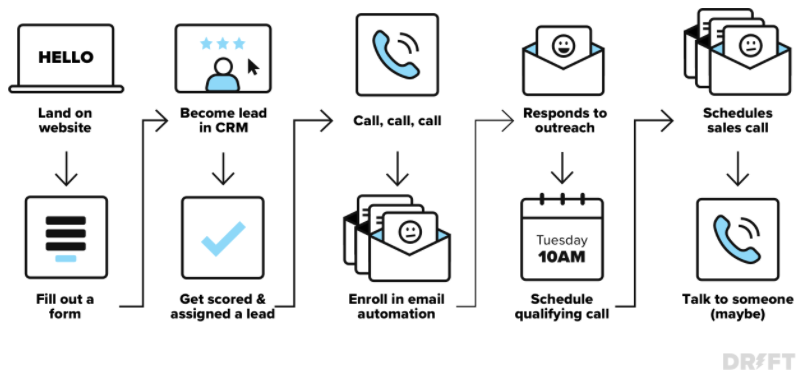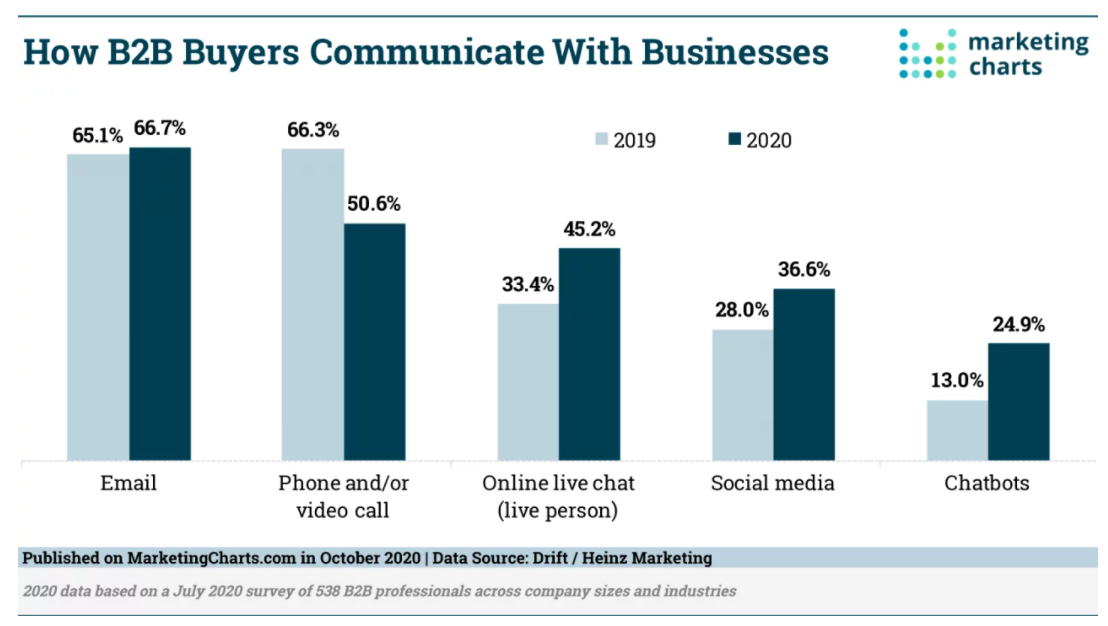Chatting With Customers

A TALKING WEBSITE
Your website is one of the most valuable sales tools your company has. It provides valuable information about your products/services to customers and potential customers whenever they are ready to learn (or when you retarget to them enough that they finally become interested again). But what if this visitor wants more information than your website provides? Or has a quick, specific question that they need answered before completing a purchase? Wouldn’t it be nice if your website could answer that question. Turns out it can, with the help of a chatbot.
WHAT IS A CHATBOT
A chatbot is the little popup that appears on a website asking if you need any help. According to this Smashing Magazine article, a chatbot is a program that replicates human conversation. And most chatbots use decision trees to determine their answer. They either recognize key words and answer, or have the user select from options to steer the conversation. It sounds like the ultimate addition to your website. But not all chatbots are created equally. The effectiveness of the chatbot depends on the company’s desired outcome.
TO CHAT OR NOT TO CHAT
It’s a great addition to a website when used correctly, and can be the determining factor of whether a customer feels satisfied with an answer or frustrated with a lack of information. So to determine if a chatbot is right for you, first outline the problem you are trying to solve with the chatbot. Is it a general, common question you get that comes with a simple, linear answer? In most cases these types of questions are customer service or sales related, and will have the best chance of ending with a satisfied customer. The chatbot will be less successful if used for answering complex, nuanced questions. And if a chatbot does receive a complex question, it should be programmed to handle the situation in an appropriate manner. Which is most likely connecting the user to a customer service representative.
CREATING YOUR CHATBOT
If you determine a chatbot is right for your website, there is a lot of work that needs to be done before unveiling it on your website. Some high-level steps include:
- Selecting a chatbot platform
- Determining the specific problems/questions it will solve
- Writing answers to the most common questions it will be asked
- Mapping user flows
- Selecting keywords for the chatbot to recognize
- Matching answers to the keywords
- Creating the chatbot’s ‘personality’ and conversational tone
It’s important for the content and development teams to work closely together to create a chatbot that is both conversational and human, while intelligent enough to provide correct answers based on keywords in vague questions.
MAKING CONVERSATION
Chatbots aren’t the only conversational marketing tactic gaining popularity. Any tactic that treats a customer as a person and not just a lead in a CRM is becoming more effective than the traditional sales funnel listed below.

This long, drawn out process is not personal and customers are noticing. According to this Drift article, only 43% of people answer cold calls and the average email open rate has fallen 20%. The new concepts of conversational marketing, and the cycle listed below, aim to build a relationship with the customer and move them through the funnel in a more personalized way.

Based on the Drift and Heinz Marketing report completed in July 2020, 500 B2B marketing professionals reported an increased growth in conversational marketing tactics like online live chat and chatbots. This personalized approach moves customers through the sales funnel with a personalized, one-on-one feel, much like a real conversation. These conversational marketing tactics are succeeding at a time when consumers are frustrated with the amount of unwanted emails and ads they receive, or the inability to get a response to a question on social media.

Conversational marketing has given companies more insights about their customers, more quality leads and made it easier to predict engagement and buying trends. And out of all the areas marketers are successfully using conversational marketing, most respondents claimed their websites have benefited most from conversational marketing tools. The switch to conversational marketing doesn’t have to be overnight. But it is important to start considering these tactics when planning for the upcoming months.

